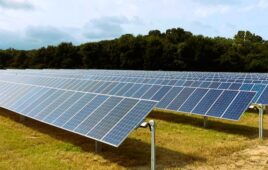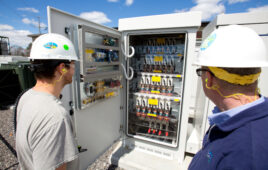Adam Gerza, COO of Energy Toolbase, explains why now is the time for residential solar companies to get into the energy storage game
After a lot of hype and false starts in the residential energy storage market, things are starting to get real. Recent data definitively shows that storage installation volumes are ramping up in the residential segment. According to GTM Research’s latest U.S. Energy Storage Monitor report, residential storage grew 248% in 2017 compared to 2016, measured in total megawatts installed. In terms of the number of residential grid-tied storage systems deployed, GTM Research counted 914 in all of 2016, which compares to 2017’s deployments of: 255 systems in Q1, 486 in Q2, 810 in Q3 and 1,516 in Q4.
If you’re a residential solar installer, now’s the time to get in the energy storage game. Here are four other reasons why:
- SGIP funds are going fast
The Self-Generation Incentive Program (SGIP) in California is the country’s most lucrative customer-sited storage incentive program launched to date. Rebate reservation volumes, which can be viewed on the SGIP program metrics page, have been a good barometer of storage market activity by segment. In the San Diego Gas & Electric (SDG&E) territory, the “small residential category” recently moved into step 5 of 5, where projects get incentivized at $0.25 per watt-hour of battery capacity, down from $0.50/Wh in step 1. There’s clearly strong demand for these incentive dollars, which are now almost all gone, given that the program re-opened less than a year ago and incentive levels decline with each step. Note: Pacific Gas & Electric (PG&E) and Southern California Edison (SCE) are both in step 2 of 5 for the “small residential category,” where projects are incentivized at $0.40/Wh of capacity. - Sunrun reported a 20% storage “attachment rate” in California
Some solar installation companies have aggressively ramped up their storage deployment volumes and started grabbing market share. In Sunrun’s most recent earnings report, it stated that year-to-date in 2018 in California “nearly 20% of the time our customers are now choosing to add batteries.” This is not a trivial number, considering Sunrun recently became the largest residential solar installer in the U.S., and California is likely still its biggest state market. Sunrun also mentioned in its earnings report that “looking ahead, up to 100% of the time (battery attachment) in Hawaii is possible,” where the value proposition to couple storage with solar is very strong. - IRS ruling on storage retrofits
The Internal Revenue Service released a private letter ruling (PLR) earlier this month related to tax credit eligibility when retrofitting an energy storage system onto a home with an existing solar PV system. The PLR determined that a retrofitted storage system would in fact qualify for a 30% federal investment tax credit (ITC), “under code 25D(d)(2) as a qualified solar electric property expenditure”, assuming that the battery charges entirely from the solar system. This is encouraging news for the storage industry, given that it’s the first official confirmation from the IRS on tax credit eligibility for a retrofitted storage system. Disclaimer: as is customary for PLR’s, the IRS explicitly stated that their ruling was solely in response to a specific homeowner, and that their decision should not be used as precedent. - Increased competition
Expect the elbows to get sharper in the residential storage game. In some markets, we’ve heard reports from residential solar installers that competitor companies are direct mail marketing to their existing solar customers, offering to retrofit a battery onto their system. Given the recent IRS private letter ruling on retrofits, it’s likely this type of activity will continue. This basically means that if you don’t sell your hard-earned existing customers on storage, someone else may. And given that solar permitting records are online public record in some locations, means that companies can write automated web scrapers to gather information and market to your customers.
Now’s the time to get educated
If you’re a residential solar installer that’s been patiently waiting for the right opportunity to enter the storage game, now’s a great time. Homeowners are inquiring about storage, equipment prices are coming down and installation volumes are accelerating. Furthermore, many of the leading energy storage vendors have learned hard lessons from being early movers in a nascent market. And they are imparting their knowledge to their dealer networks on issues like equipment interoperability, interconnection, policy risk and installation standards. This education is invaluable.
To compete effectively in the storage market, you’ll need to get educated on many different facets. For example, Energy Toolbase offers resources such as a new video tutorial on how to model projects in Self-Powered Mode, in which storage gets paired with a solar PV system to prevent exporting energy to the grid, which happens to be one of the most popular modes of operation for residential storage systems around the world today.





Nice article and good points, the market is starting to move. The 5th reason that should have been mentioned more is that battery prices are coming down fast and will continue to do so, which will allow projects to pencil.